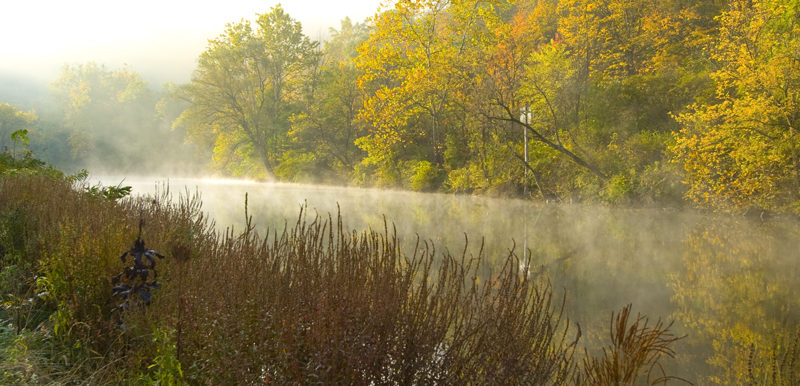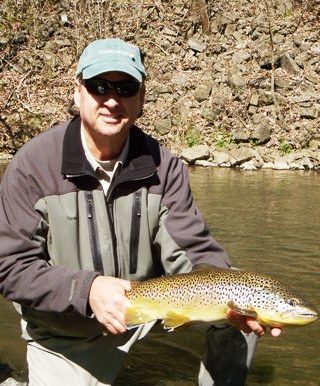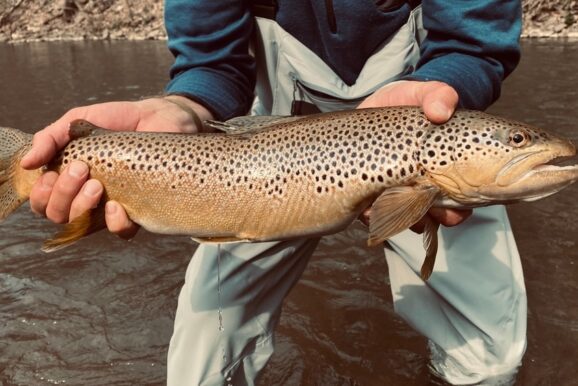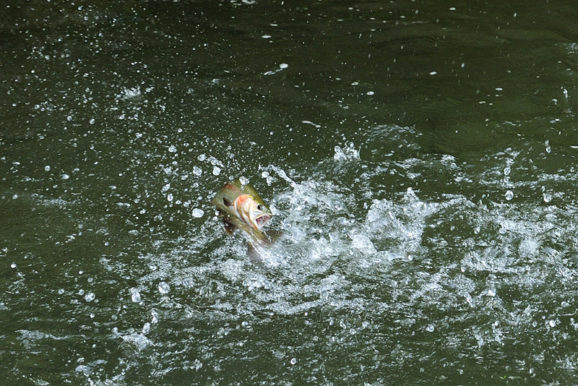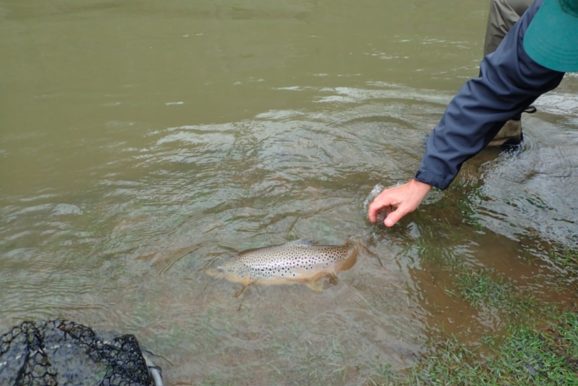To some of you, the information in this piece will come as no surprise. To others, it will be a tidbit of thought that may have never crossed your mind. Throughout the last few seasons, I have fielded many questions about the Little Juniata, the quality of the river, its trout, and its hatches.
We focus the large percentage of our fishing on Spruce Creek, Penns Creek, and Yellow Creek and that is because they are world-class, but I am writing to tell you that another world-class fishery flows right in front of the club. I have guided trips off and on for the past 17 seasons, and before coming to the club, a large percentage of my guided trips happened on the Little J.
People travel from all over the mid-Atlantic and much farther away to come and fish the Little Juniata. It’s known nationwide for its number of wild brown trout and its quality hatches of grannom caddis and sulphurs. I decided to write this blog to answer a few general questions we often get asked about the Little J.
Are there good numbers of fish in the Little J?
The Little Juniata has one of the highest densities of wild trout in the state of Pennsylvania. That is significant considering PA probably has more miles of quality trout streams than anywhere in the United States. Recently I was rereading the biologist report from 2010 which stated that the Little J had an estimated 2,900 plus catchable trout per mile from Ironville to the mouth. Those are incredible numbers.
Are there big fish in the Little J?
The answer to this question is yes, but not in the same way big is measured on Spruce Creek. In my opinion, a trophy fish on the Little J would be around 18-20 inches. There are not many 20-inch-or-bigger fish in the river. Most wild browns on the Little J range from 8-13 inches. These numbers are very good for a public wild trout river.
What is fishing like on the Little J?
Some days are challenging. Some days it can be very easy fishing one minute and temperamental and frustrating the next. Wading can be challenging in high flows and relatively easy when the levels are down. Sometimes a guy can fish throughout the day and swear that no fish live in that river, only to go down in the evening and watch 100 fish rise to eat flies at dusk. The scenery is stunning. The hatches and dry fly fishing can be great. It’s a river full of gorgeous wild, moody brown trout. In short, it is trout fishing at its best – never a given, never a push over, and changing every day.
If you have been wondering what the River is like, we would be happy to answer any more questions you may have about the Little J. Maybe your curiosity has gotten the better of you and you need a guide to show you around the river for the day.
The staff at HomeWaters would be happy to assist with any questions or service.

